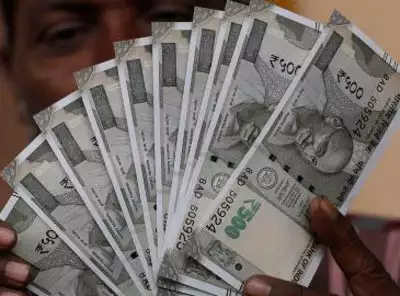What Does It Mean for the Economy?
In a development that has sent ripples across the financial sector, liquidity in India’s banking system has plummeted to its lowest level in 15 years. This sharp decline has raised concerns among economists, bankers, and policymakers, as it could have far-reaching implications for the broader economy. But what exactly does this mean, and why should you care? Let’s break it down.
What’s Happening?
Liquidity in the banking system refers to the availability of cash and other liquid assets that banks can use to meet their short-term obligations. When liquidity is tight, banks find it harder to lend money, which can slow down economic activity. According to recent data, the liquidity deficit in India’s banking system has widened significantly, reaching levels not seen since the global financial crisis of 2008.
The Reserve Bank of India (RBI) has been actively managing liquidity through various measures, including open market operations (OMOs) and adjustments to the cash reserve ratio (CRR). However, a combination of factors, including higher currency demand during the festive season, increased government spending, and a surge in tax collections, has drained liquidity from the system.
Why Does It Matter?
- Impact on Borrowing Costs: Tight liquidity often leads to higher interest rates, as banks scramble to secure funds. This can make loans more expensive for businesses and consumers, potentially slowing down investment and consumption.
- Economic Growth: A liquidity crunch can act as a brake on economic growth. With less money available for lending, businesses may delay expansion plans, and consumers may cut back on spending, leading to a slowdown in economic activity.
- Stock Market Volatility: The stock market is highly sensitive to liquidity conditions. A tight liquidity environment can lead to increased volatility, as investors become more risk-averse.
- RBI’s Dilemma: The central bank faces a tough balancing act. On one hand, it needs to ensure that inflation remains under control, which may require tighter monetary policy. On the other hand, it must support economic growth by ensuring adequate liquidity in the system.
What’s Next?
The RBI is expected to take proactive steps to address the liquidity crunch. This could include injecting more funds into the system through OMOs or even cutting the CRR to free up more money for lending. However, any such move would need to be carefully calibrated to avoid stoking inflation, which has already been a concern in recent months.
In the meantime, businesses and consumers should brace for a period of tighter credit conditions. It may be a good time to review your financial plans and ensure that you have adequate liquidity to meet your needs.
The Bigger Picture
While the current liquidity crunch is concerning, it’s important to remember that liquidity conditions are cyclical. The RBI has a range of tools at its disposal to manage the situation, and it’s likely that liquidity will improve in the coming months as seasonal factors ease.
However, the situation underscores the importance of maintaining a balanced approach to monetary policy, especially in a complex and dynamic economy like India’s. As the central bank navigates these choppy waters, all eyes will be on its next move.
Stay tuned for more updates as this story develops. In the meantime, keep an eye on your finances and be prepared for a potentially bumpy ride ahead.
What are your thoughts on the liquidity crunch? How do you think it will impact the economy? Share your views in the comments below!
